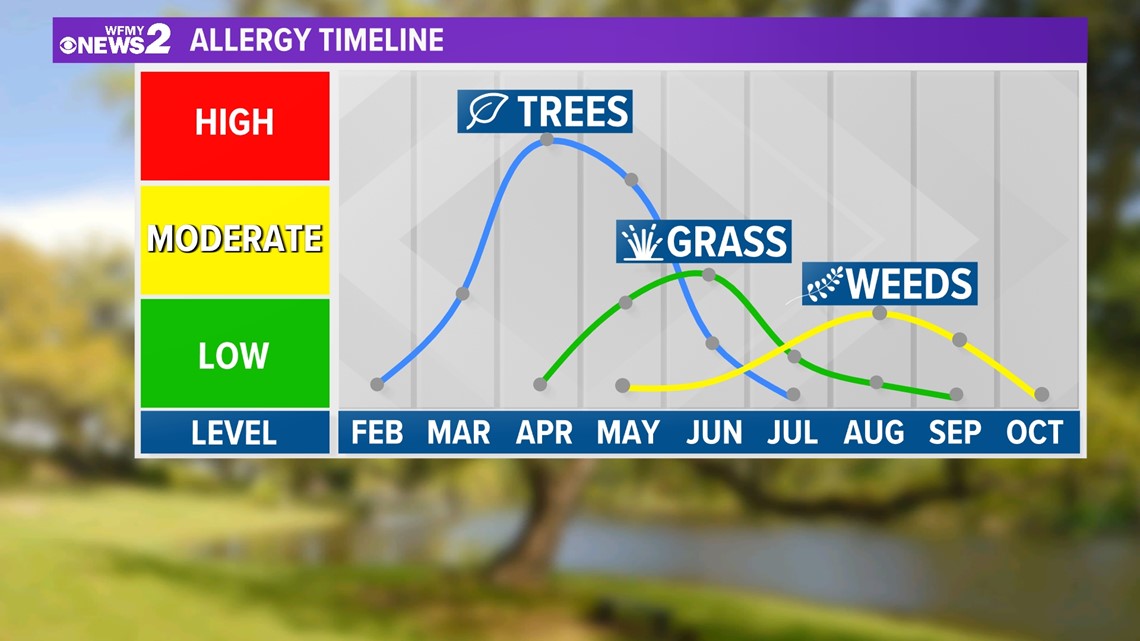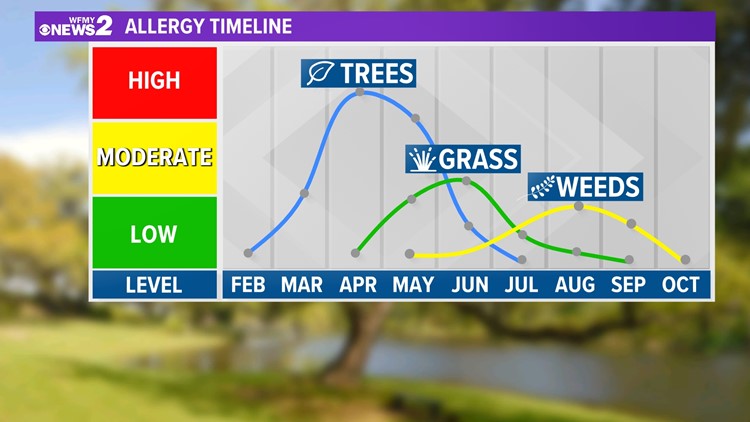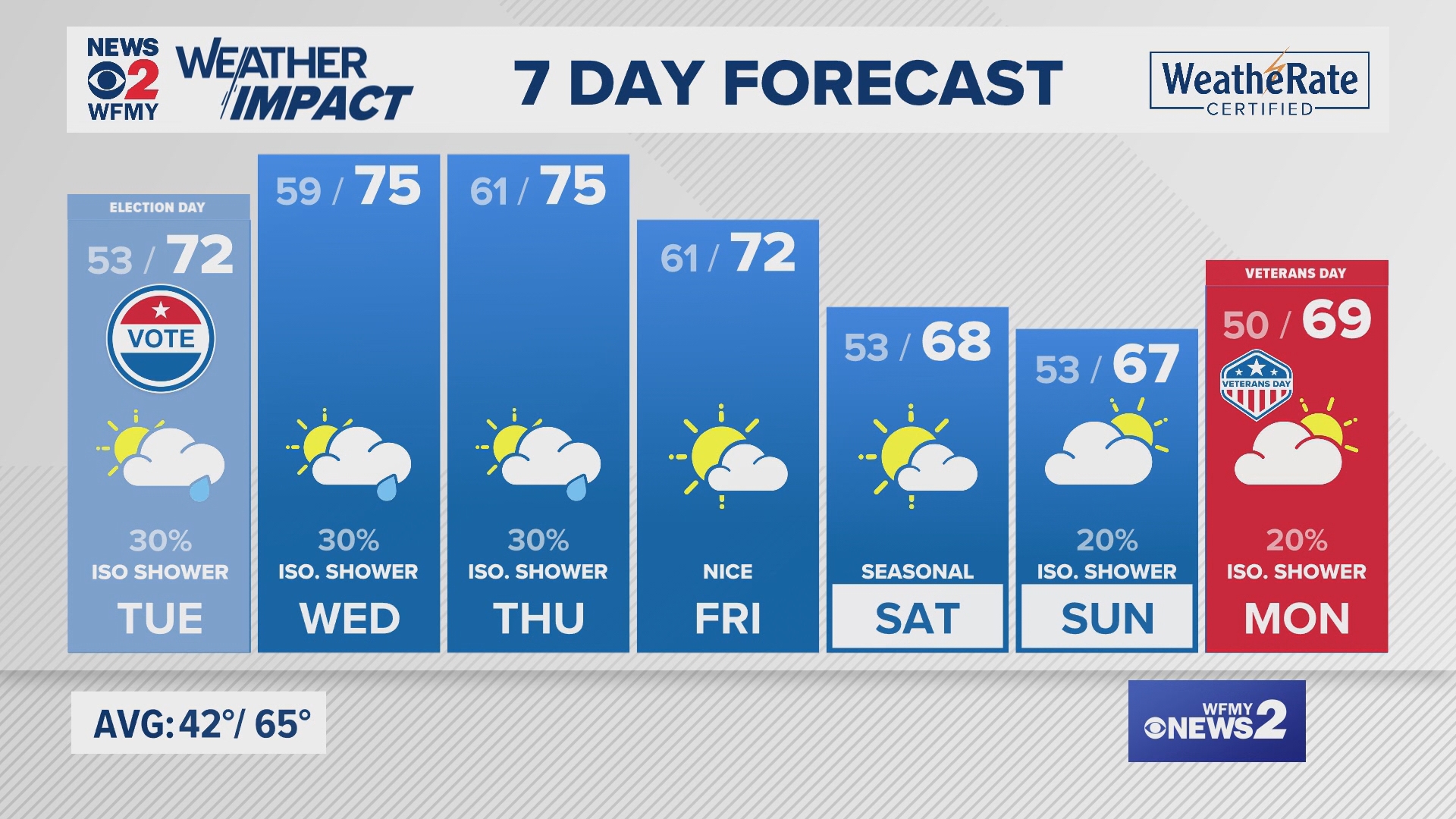GREENSBORO, N.C. — Greensboro is named for its luscious oasis of green that overwhelms the town, but that also means an area with abundant bloom and pollen. Those sensitive to pollen allergies are left with runny noses, sneezing, coughing, and itchy, watery eyes. Nearly 50% of Triad adults have allergies, according to the latest PRIME Lingo data. So, folks in an allergy frenzy are wondering: When is this going to end?
Well, local pollen season normally begins when cedar first shows itself. This happens in response to warmer temperatures as early as February. That isn't the only pollen native to this area with illustrious green. Oak pollen is another allergy for many. This peaks in April. Oak pollen leads to the highest pollen density of the year. Other tree pollens that affect many in the area include maple, pine, and birch. The tree pollen season ends in early June. Grass pollen peaks in May and continues through September. Weed pollen increases in May and continues through June, as well. Pollen levels across trees, grass, and weeds are low by July; however, ragweed spikes again in August through mid-September.
The season as a whole usually comes to a sharp end around late October, which is the timing of our first hard frost. The hard frost is when the air and the ground reach that freezing point and plants can't withstand the harsh elements so much that it hinders their blooming process. The pollen count is categorized as either absent, low, moderate, high, or very high.
Over the past several weeks throughout the month of March, our high pollen observed across the area has been due to trees. Over the weekend, the high pollen count was related to the higher pollen counts of oak tree pollen and elm pollen.





